#cluster a flags
Explore tagged Tumblr posts
Text
clusters a, b and c remade
[clusters a b and c remade]


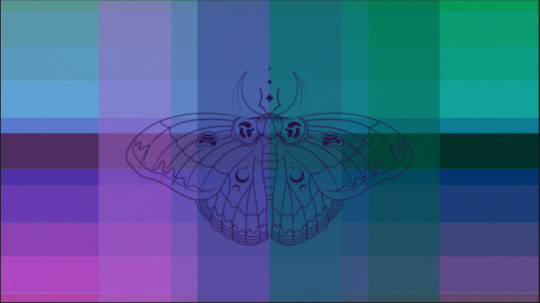





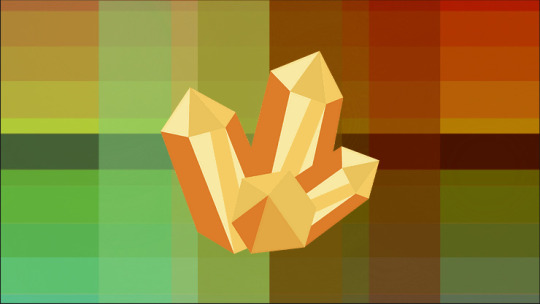

remade our flags for clusters a b and c.
more to come

previous flags:
cluster a(link), cluster b(link), cluster c(link)

transid/x and radqueers dont touch my shit thanks.
not replacements to any current flags just remakes of our old alt flags
sorry for lack of ids due to low/no spoons



#cluster c personality disorder#cluster a personality disorders#cluster b#cluster a#cluster c#cluster a flags#cluster a pd#cluster a safe#cluster a flag#cluster b awareness#cluster b pd#cluster b personality disorder#cluster c flags#cluster c pd#personality disorders#actually cluster b#personality disorder#cluster b safe#actually cluster a#actually cluster c#cluster b personality disorders#cluster c flag#cluster b flag
33 notes
·
View notes
Text




݁ᛪ༙ SIRENOSEXUAL ༢ ㅤ𓈒
ི 🂱 ── Sirenosexual is a sexuality that can be described as only being sexually and romantically attracted to ones chosen person, favored person, favorite person, etc regardless of gender. This term is not fluid, is not a variant of demi, and is not a variant of pan. Alternatively called ‘Sirenorose’.
PERSONALITY DISORDER ONLY TERM

#ི🦴 ─ coined by us#mogai#mogai coining#mogai flag#mogai term#mogai gender#liomogai#liom#liom coining#coining#npd#actually npd#npd culture is#aspd traits#a#aspd#bpd#actually bpd#bpd things#actually cluster b#personality disorder#sexuality#lgbt pride#favorite person#favored person#chosen person#actually antisocial#npd safe#actually narcissistic#did system
304 notes
·
View notes
Text
SUSPECTED NPD / MIDNIGHT NPD



someone who either suspects, has traits of, or otherwise cannot be 100% sure they have NPD, but still find it important enough to mention as they relate to experiences and need to note how they interact with others.
examples may include people who :
aren't able to properly self-diagnose (ex. memory issues, focus issues, not enough resources) and choose to say they're suspected instead
are in the process of getting diagnosed or on a waiting list
are an alter who has npd traits while the rest of the system doesn't have these traits
are unsure whether their symptoms are pervasive/affect their day-to-day enough to be a personality disorder
tl;dr : a person with suspected npd, npd traits, etc.
self indulgent. made for us T‿‿T
#npd#npd traits#npd safe#npd flag#cluster b#narcissistic personality disorder#mad flag#mad pride#madpunk#liom coining#liom#liom flag#anti endo dni#endogenic safe#endo safe#pro endo#endo friendly
423 notes
·
View notes
Text



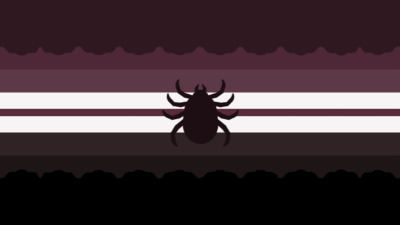
𓉸 𓈒 PARASITE
made for those who are considered "parasitic" in nature because of their disorder or reclaim the term "parasite"
made by a malignant narcissist with cluster B's in mind, but anyone can use, somewhat inspired by this post
very self indulgent, flag by me

153 notes
·
View notes
Text


Dependent comfort / Depend comfort
a term that was originally coined for our friend @themurdersc3ne !!
dependent comfort is basically like narc fuel but for those with pwDPD( dependent personality disorder )
we aren’t a pwDPD so we aren’t the best person to give examples of what depend comfort looks like :,)
This term is (obviously) pwDPD exclusive .

#dpd#actually dpd#actually dependent#cluster c#qai community#qai term#qai coining#qai flag#qai#liom#mogai#liomogai#mogai coining#mogai flag#liom coining#< tags for reach
180 notes
·
View notes
Text

CLUSTER-B EVIL


a term for when you fall under the cluster-b disorders and are evil. this might mean that the user often participates or exhibits traits that are seen as "evil" due to their disorder (ex. having low-empathy and in turn, might have a reputation of hurting people). whether these actions are intentional or not is up to the user. however, i do not condone harming others for whatever reason and using your disorder as a cushion for your actions.
this is incredibly self-indulgent on my end due to how i acted in the past. please take this with a grain of salt as this was made to be silly. i too once was a bpd evil stereotype, so i can make this for a treat.

this term / flag was created by me, but if this was already coined, consider this an alt. flag. i'm sure i'm not the first.
note : this is a re-upload but with a more /srs description than the last. i think people with cluster-b disorders should be able to destigmatize themselves while also being able to express their more negative / "evil" traits that the public hates.

#🌀; expendable#liom#mogai#liom coining#liom community#liom flag#liom friendly#liom label#liom safe#liom term#liomogai#mogai coining#mogai label#mogai term#pro mogai#mogai gender#mogai friendly#mogai flag#mogai safe#mogai community#actually npd#actually bpd#actually aspd#actually hpd#cluster b#cluster b safe#cluster b disorders#i love you guys yawn
95 notes
·
View notes
Text






ೀㅤㅤ"MANIPULATOR"
[PT] "Manipulator" [END PT]
"Manipulator" , or Manipulative Personality, is a term for people with Cluster B Personality Disorders (more specifically NPD or ASPD , but not exclusive) that struggle with showing manipulative traits or being manipulative because of their disorder symptoms.
❗ : not made to romanticize or glorify manipulation , only to be used as a self-identifier
ྀི◟ ͜ ̣̣̥⠀ requested by anon.

#🍷. ︵ a lil smth for you#💌mail!#🕯️⸺ siin's coining#mogai#liom#mogai flag#mogai coining#mogai term#liom coining#“manipulator”#manipulative personality#cluster b#npd#aspd#bpd#hpd#personality disorder#antisocial personality disorder#narcissistic personality disorder#borderline personality disorder#histrionic personality disorder#actually aspd#actually npd#mad#mad coining#pd flag
132 notes
·
View notes
Note
questioning aspd-culture is: it seems I have all the traits, though I haven't done anything illegal because I live with controling probably bpd parent and have a fairly well-developed rationalization and I have good control over all emotions i may feel because of that (I just suppress them)
Edit: TW/CW uncensored ableist language in the comments (not used in an ableist way - it’s the name of a diagnostic test)
Oh yeah, this is actually super common. That's why a common take amongst non-ableist professionals is that the criteria for lawbreaking also covers rulebreaking including social rules. Any strong desire that has to actively be fought to break laws also can fall under that depending on who you ask if the reason you don't is grounded in something other than morals or respect for the law.
Something I like to bring up as often as I can for people stuck under the misconception of the law breaking thing is that a big thing in pwASPD is a desire for convenience because happiness seems at best temporary and at worst fake, but living a life where everything is fairly convenient is a tangible, achievable task. Hiding a body is not convenient, cleaning up blood is not convenient, hiding from the law is not convenient. Also talking to cops sucks and jail sounds like one giant ASPD flare so screw anything that would make me go there.
Also, remember that you don't have to fit every criterion to have ASPD - it's 3/7 that are persistent and consistent, plus paying attention to associated traits/development criteria and checking for differential diagnoses.
Plain text below the cut:
Edit: TW/CW uncensored ableist language in the comments (not used in an ableist way - it’s the name of a diagnostic test)
Oh yeah, this is actually super common. That's why a common take amongst non-ableist professionals is that the criteria for lawbreaking also covers rulebreaking including social rules. Any strong desire that has to actively be fought to break laws also can fall under that depending on who you ask if the reason you don't is grounded in something other than morals or respect for the law.
Something I like to bring up as often as I can for people stuck under the misconception of the law breaking thing is that a big thing in pwASPD is a desire for convenience because happiness seems at best temporary and at worst fake, but living a life where everything is fairly convenient is a tangible, achievable task. Hiding a body is not convenient, cleaning up blood is not convenient, hiding from the law is not convenient. Also talking to cops sucks and jail sounds like one giant ASPD flare so screw anything that would make me go there.
Also, remember that you don't have to fit every criterion to have ASPD - it's 3/7 that are persistent and consistent, plus paying attention to associated traits/development criteria and checking for differential diagnoses.
#I will say it until I go blue in the face#cluster b disorder criteria are ableist as all hell#they focus on how we affect other people while ignoring how it actually affects us#and that inherently means that they are stereotyping in ways that will exclude pwASPD#Honestly I think some of the associated traits should be added to the list of criteria#not as mandatory things but similar to how it is now where they are on the list of flags for ASPD#aspd-culture-is#aspd culture is#aspd culture#actually aspd#aspd#aspd awareness#actually antisocial#antisocial personality disorder#aspd traits#anons welcome
80 notes
·
View notes
Note
What is the difference between sociopath and psychopath?
OH! OH OH OH I LOVE THIS QUESTION. Also this is a massive explanation that really goes in-depth about neurology so I'll do a read more.
The main difference is that a psychopath is born with ASPD. A sociopath develops it during early (we're talking starting off as young as 2) childhood due to severe long-term (several years) abuse and neglect (generally from main caretakers).
There are also some nuances in how a socio's brain works in comparison to a psycho's. But the major difference that really determines all of the minor differences is that a psychopath doesn't necessarily have trauma related to their ASPD, and tends to have a lot less comorbid disorders. A sociopath ALWAYS has trauma that directly caused their ASPD and a fucking CVS receipt of comorbid disorders the large majority of the time.
There are also more sociopaths than there are psychopaths. The physiology of ASPD is that the brain's structure is different from an empathetic person. Specifically in the prefrontal cortex and the amygdala, because there's not enough activity in those areas for someone with ASPD. The prefrontal cortex is involved in decision-making, impulse control, and regulation of social behavior, and the amygdala is involved in emotion processing and fear response. Abnormalities in the amygdala contribute to a lack of empathy and increased aggression (aggression does NOT equal violence in this case, but rather an increased and pervasive level of negative emotion that makes you more likely to act out). Genetics have been proven to play a factor in how likely someone who was born empathetic would develop ASPD.
The difference here is that a psychopath is born with reduced blood flow to those areas. No trauma needed, that's just how they work.
On the contrary, a sociopath develops reduced blood flow to those areas because if you live in an environment that fosters the growth of anti-social traits and behaviors you are not exercising those parts of your brain. I'll go into a deep dive about the neurological aspects of how formative trauma turns into ASPD.
Chronic stress from abuse can impair the development of the prefrontal cortex; reduced activity or structural abnormalities in this area can lead to increased impulsivity and difficulty regulating emotions. The amygdala becomes hyperactive due to repeated exposure to threatening situations. This results in heightened aggression and reduced ability to empathize with others. Abuse can lead to a smaller hippocampus, impairing the ability to process emotions and increasing vulnerability to stress.
Chronic abuse elevates cortisol levels (the stress hormone), which can alter brain function and structure. Persistent high cortisol levels can damage the prefrontal cortex and hippocampus, exacerbating emotional and behavioral regulation issues. Serotonin and dopamine neurotransmitters regulate mood and behavior. Abuse can disrupt their levels, contributing to aggression, impulsivity, and difficulty experiencing pleasure or reward.
The autonomic nervous system (ANS) becomes hyperactive, leading to a state of constant alertness and readiness for perceived threats. This can cause chronic anxiety, irritability, and aggressive responses. Conversely, some individuals may develop a blunted stress response, showing reduced physiological reactions to stress. This can lead to a lack of fear or concern for consequences. (These two may combine so that safe things trigger stress and unsafe things do not).
Abusive environments can impair the development of secure attachments, leading to difficulties in forming trusting relationships. This can foster detachment, manipulative behavior, and a lack of empathy. Inconsistent or abusive parenting can disrupt normal emotional development, making it difficult for individuals to manage their emotions and impulses. This can result in volatile behavior and poor emotional control. Abusive environments often model and reinforce antisocial behaviors. Children learn to cope with stress through aggression or manipulation, which can become ingrained patterns of behavior. Abusive environments can impede moral development, leading to difficulties in understanding and adhering to societal norms and rules. This can result in a disregard for others' rights and a propensity for criminal behavior.
Trauma and abuse can also alter gene expression through epigenetic changes, affecting the brain's development and function. These changes can increase the risk of developing ASPD by influencing genes involved in stress response, emotional regulation, and social behavior.
A lot of people who went through severe childhood abuse may experience anti-social symptoms without having full-blown ASPD. When I was younger I did a genetic test that led to some very fascinating results that now that I'm older and understand my disorder I understand how my ASPD ties directly into my genetic depression, or rather my genetic depression is caused by my ASPD.
I don't process/produce Vitamin B6, B9 (Folate), and B12. These vitamins are crucial for brain function and the production of neurotransmitters. Deficiencies lead to mood disorders, cognitive impairments, and other neurological issues. B vitamins are involved in synthesizing neurotransmitters like serotonin, dopamine, and norepinephrine, which regulate mood and behavior. These are neurotransmitters that act as natural painkillers and mood enhancers. B vitamins play a role in the metabolic pathways that produce endorphins. An inability to properly absorb, process, or produce B vitamins can disrupt these pathways, leading to lower endorphin levels, which can contribute to symptoms of depression and affect overall mental well-being.
Because of how specific my issue is I had to take a specialized blend of B Vitamins. Unfortunately once I turned 18 my parents stopped buying them for me and I haven't had the funds to purchase my own at all since I was cut off (which has led to my mental health tanking). I strongly suggest anyone who deals with anti-social traits in a way that is disruptive to their daily life to look into these. You can't generally find them at a drug store, but they're on Amazon for 25-ish USD for a month's worth bottle. Which is really good because when my parents were buying them two years ago or so they were 40$ a bottle.
I have been on all sorts of mood stabilizing medications, psychosis medications, anti-depressants, anxiety medication, etc. None of them worked because we didn't know what exactly was wrong with me. All it did was make it so I couldn't feel the negative emotions properly, so I was constantly numb. What the vitamins did for me is that they let me process passive endorphin exchange and metabolism for the first time in my life, which meant that there wasn't a drastic barrier between me and positive emotions.
I strongly suggest this for anyone who is also just dealing with mood instabilities/disorders because it helped immensely. I'm bipolar two and I wasn't dealing with any major manic episodes while I was on them for about two years, so it helped drastically in that aspect too.
I know this got a little off the rails, but sociopathy is such a hard disorder to deal with, and it's so demonized by the media. Just telling someone you're a clinical sociopath is enough for them to kick you out of their life, even though it has no reflection on your character and is just an outcome of a horrible, hell-like childhood. So I think it's important for ASPD voices to speak up about the disorder when they can and try to dispel some of the awful stigmatization.
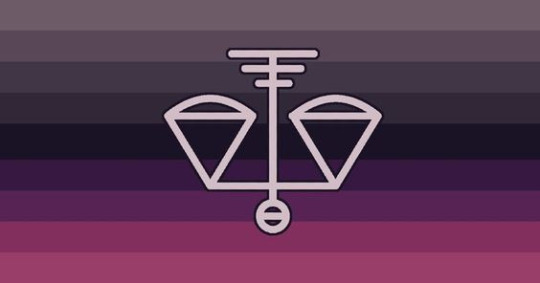
#alex answers#answered ask#thanks for the ask!#clinical sociopathy#clinical psychopathy#psychology#neurology#sociopathy/psychopathy#sociopath vs psychopath#actually aspd#aspd safe#aspd awareness#mental health#mental heath awareness#mental illness#mental disability#disability pride month#aspd flag#aspd pride#apsd voices#sociopath#psychopath#actually antisocial#antisocial personality disorder#personality disorder#cluster b safe#cluster b illness#cluster b disorder
195 notes
·
View notes
Text



ㅤㅤㅤㅤㅤㅤ 𓏵 Cluster A Agere.
A flag for age regressors with cluster A personality disorders.
[ PT : A flag for age regressors with cluster A personality disorders. /End PT. ]



ㅤㅤㅤㅤㅤㅤ 𓏵 Cluster B Agere.
A flag for age regressors with cluster B personality disorders.
[ PT : A flag for age regressors with cluster B personality disorders. /End PT. ]



ㅤㅤㅤㅤㅤㅤ 𓏵 Cluster C Agere.
A flag for age regressors with cluster C personality disorders.
Requested by : Anon.
[ PT : A flag for age regressors with cluster C personality disorders. Requested by anon. /End PT. ]
#000. carespace,#005. flags,#cluster a agere#cluster b agere#cluster c agere#cluster a#cluster b#cluster c#personality disorder#mental health#microlabel#flag#flags#term#terms#coining#agere#age regressor#agere blog#age regression#sfw agere#agere community#age regressive#pride#mogai#liom#liomogai#mogai safe#liom safe#mogai friendly
123 notes
·
View notes
Text

꒰ྀི HISTRIOPLATONIC



an aplatonic spectrum term which can be used to signify "abnormal" perceptions of platonic relationships that can be seen in those with HPD
this is inspired by antiplatonic by @aspdboyfriend and can serve as an HPD version of antiplatonic, the symbol is by ratbastardz

#actually histrionic#actually hpd#histrionic#histrionic pd#histrionic personality disorder#hpd#hpd safe#liom coining#mogai#mogai coining#໒꒱ cannihistrionic#cluster b#flag coining#mogai flag#flag making#liom flag
59 notes
·
View notes
Text
Cluster B Pride/Support Flags
Antisocial Personality Disorder

Narcissistic Personality Disorder

Borderline Personality Disorder


Histrionic Personality Disorder

ASPD Flag NPD Flag BPD Flag + BPD Flag Update HPD Flag
#aspd#bpd#hpd#npd#cluster b#actually aspd#aspd safe#hpd safe#npd safe#bpd safe#psychology#aspd pride#bpd pride#npd pride#hpd pride#disorder pride#disability pride#alex talks#antisocial personality disorder#borderline personality disorder#narcissistic personality disorder#histrionic personality disorder#repost from main#psychology flags#flags#pride flag
72 notes
·
View notes
Text
BPD Acceptance & Awareness Flag
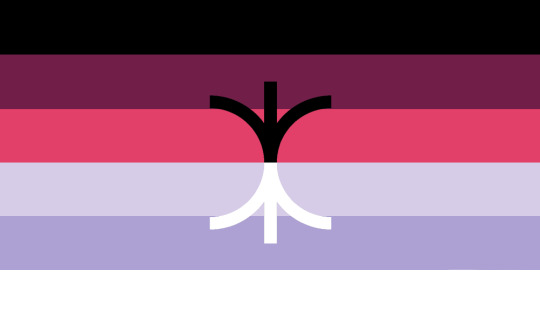
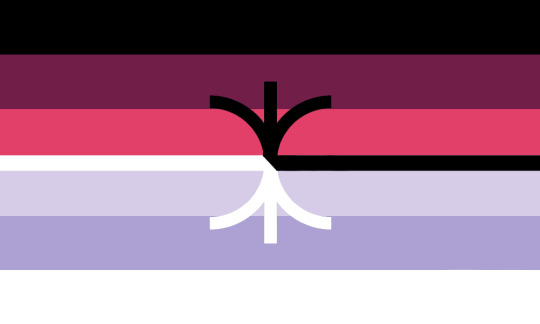
While there is a popular black and white BPD flag, I wanted to create one with more colour to show the depth of BPD. I was inspired by the NPD Awareness Flag by npdsafe, and the alternate NPD flag by npdflag to make this. I followed the amount of stripes the NPD flag has as to show solidarity between cluster B disorders.
Stripe Meanings:
(#000000) Black: Duality, Emptiness, and Support —
Black and White both represent the duality of BPD. Along with that, black represents feellings of being void, hollow and emptiness. It also represents support for people with BPD.
(#711f49) Purple-Red: Negative Intense Emotions —
Purple-Red, Dark Magenta, represents intense negative emotions, both internal and external. This includes overwhelming feelings of rejection, feelings of abandonment, anger, and more.
(#e24069) Pink-Red: Positive Intense Emotions —
Pink-Red, Lipstick Pink, represents intense positive emotions, both internal and external. This includes feelings of europhoria, love, healing, wellbeing, and more.
(#d6cce8) Light Lavender: Fear and Dissociation —
Light Lavender, Haze, represents fear, fear of abandonment, paranoia, dissociation, loss of sense of identity, feeling out of touch with reality, derealisation, and depersonalisation.
(#ada1d3) Dark Lavender:Solidarity and Remembrance. —
Dark Lavender, Periwinkle, represents solidarity between people with BPD and other cluster B disorders. It also serves as a reminder of the different ways BPD presents itself in different people. It also serves rememberance of those with BPD who have passed away.
(#ffffff) White:Duality and Recovery —
White and Black both represent the duality of BPD. Along with that, white represents recovery, and that people with BPD are not hopeless.
#bpd stuff#bpd#actually borderline#actually bpd#cluster b#boarderline personality disorder#flag#my flags#alternative flag#bpd flag#bpd alternative flag#alt flag#actually cluster b#bpd awareness#actually mentally ill#mental health#bpd pride#bpd splitting#pd flag#tags for reach#mogai flag#mogai community#mogai friendly#inclusive flag#mad pride#mad pride flag
662 notes
·
View notes
Text

NARCANNIBAL



a flag for those with NPD who have a connection to cannibalism/cannibalistic themes
exclusive to those with NPD
this is somewhat self indulgent, i may make more
coined by me (?) im pretty sure

#flag coining#mogai#mogai coining#mogai flag#npd#narcissisticpd#narcissistic personality disorder#cluster b#oneeyedbastardd
73 notes
·
View notes
Text
Avoident Personality Disorder Adjacent
Avoidant Personality Disorder (AVPD) adjacent flag. This is left vague so anyone who has, is questioning, or displays traits of the disorder may use it. This was made with people who have trouble pinpointing neurodivergencies and is NOT for transid supporters

Flag made by me! Colours picked from this post
#mogai coining#mogai flag#mogai term#liom coining#liom flag#liom term#liomogai#mad flag#mad pride#mad pride flag#neurodivergent#neurodivergent flag#persodivergent#cluster c#avoidant personality disorder#avoidant pd#avpd#avpd flag#avpd traits#avpd adjacent
52 notes
·
View notes
Text




cluster b personality disorder flags.
in order: BPD, HPD, ASPD, NPD
feel free to use.
81 notes
·
View notes